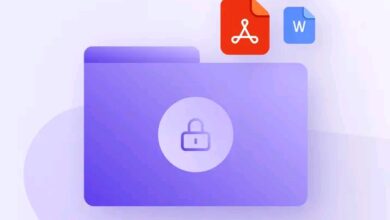How Blockchain Works

Blockchain technology has been making waves across various industries, promising enhanced security, transparency, and efficiency in processes.
Understanding how blockchain works can seem intimidating at first, but fear not
In this article, we will take you through a step-by-step explanation of the inner workings of blockchain, along with simple terms and practical examples to illustrate its functionality.
What is Blockchain?
At its core, blockchain is a decentralized and distributed ledger that records transactions in a secure and immutable manner.
It operates on a peer-to-peer network of computers, where each participant (node) maintains a copy of the entire ledger.
This distributed nature ensures that there is no single point of failure, making it highly resilient to tampering and hacking attempts.
How Does Blockchain Work Step by Step?
Step 1: Data Structure
Each transaction is grouped into a block along with a unique identifier, timestamp, and a reference to the previous block, forming a chain of blocks.
Step 2: Verification
Transactions are verified by network nodes using complex cryptographic algorithms. Once verified, the block is added to the chain.
Step 3: Consensus Mechanism
To ensure agreement on the validity of transactions, various consensus mechanisms like Proof-of-Work (PoW) or Proof-of-Stake (PoS) are employed. PoW requires miners to solve computationally intensive puzzles, while PoS relies on validators staking their coins to participate in block creation.
Step 4: Adding a Block
Once consensus is reached, the new block is added to the blockchain, and all nodes update their copies.
Step 5: Immutability
Once added to the blockchain, a block becomes immutable, meaning its data cannot be altered or deleted.
How Does Blockchain Work in Simple Terms?
Think of a blockchain as a digital, tamper-proof ledger that stores records in a chain of blocks. Imagine you and your friends have a notebook where you write down transactions.
Whenever someone wants to make a transaction, everyone in the group verifies it, and once it’s confirmed, the transaction is recorded in the notebook.
Each page in the notebook represents a block, and each page is connected to the previous one, forming a chain. Once written, the transactions cannot be erased or changed, creating an immutable record.
How Does Blockchain Make You Money?
Blockchain can offer various opportunities to generate income:
• Cryptocurrency Investment
Investing in cryptocurrencies like Bitcoin, Ethereum, or other altcoins can yield profits if their value appreciates over time.
• Blockchain-Based Projects
Engaging in projects built on blockchain technology or decentralized finance (DeFi) platforms can provide income through staking, yield farming, or providing liquidity.
• Token Creation
Creating and launching your own tokens or cryptocurrencies can offer income streams if the project gains popularity and utility.
• Smart Contracts
Developing and selling smart contracts for specific use cases can be a lucrative venture.
FAQs
How does a blockchain work step by step?
Blockchain works by grouping transactions into blocks, verifying them through cryptographic algorithms, achieving consensus among network participants, adding verified blocks to the chain, and creating an immutable record of transactions.
How does blockchain work in simple terms?
In simple terms, blockchain is like a digital, tamper-proof ledger where transactions are recorded in blocks connected like pages in a notebook. Once written, transactions cannot be altered or deleted, ensuring transparency and security.
How does blockchain make you money?
Blockchain offers income opportunities through cryptocurrency investment, engaging in blockchain projects, creating tokens, and developing/selling smart contracts for various use cases.
How blockchain works with an example?
An example of blockchain in action is tracking the supply chain of goods. Each step of the process, from production to distribution, is recorded as a transaction on the blockchain, providing transparency and traceability.





